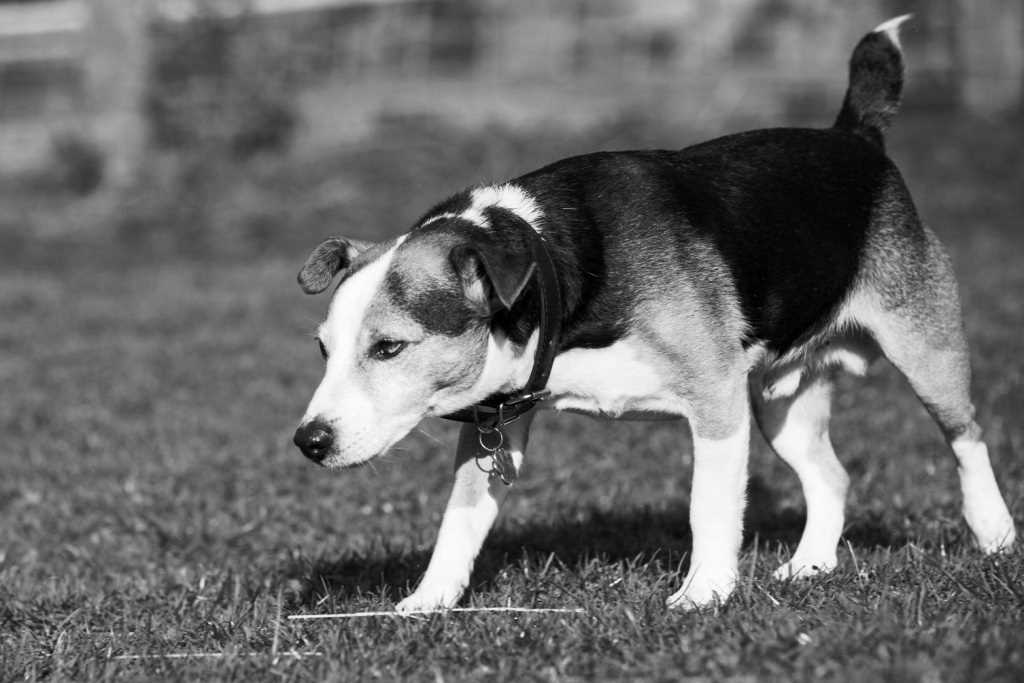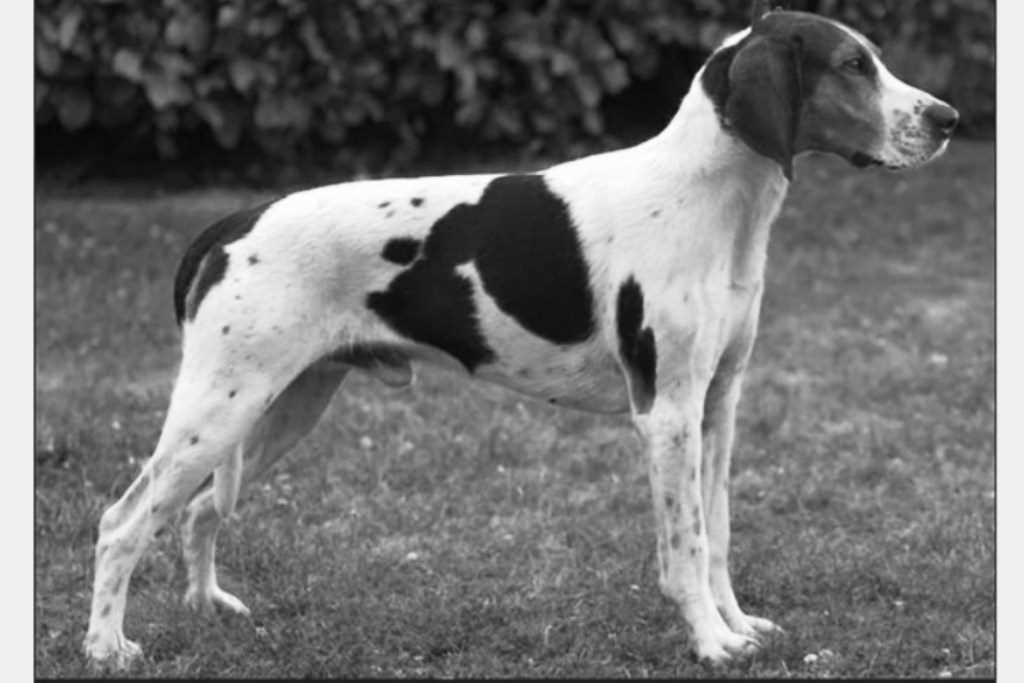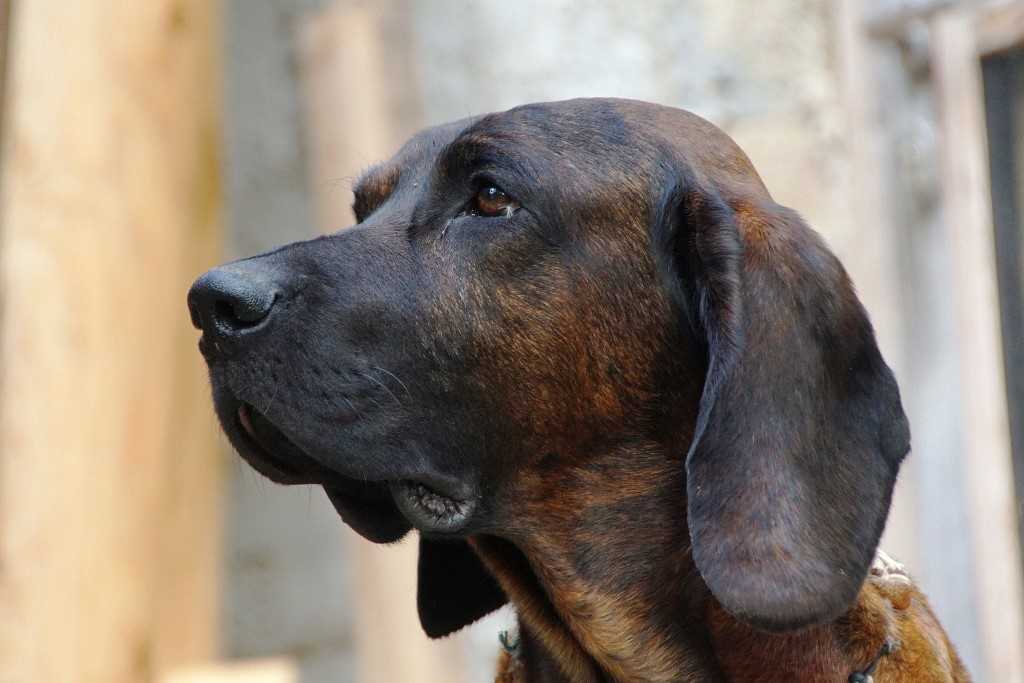The origin of the hamiltonstovare dog breed is Swedish and owes its name to Count Adolf Patrick Hamilton, who in 1886, at the first hound exhibition in Sweden, presented a pair of dogs, Pang and Stella, which were supposedly the first two hamiltonstovare exhibited.
These dogs had been known in Sweden since the 16th century, but their popularity was limited to royalty, as hunting was only allowed to them. At the end of the 18th century, the ban on hunting for peasants was lifted and this hound gained fame, as did all the other hunting dogs in the area. Before Hamilton’s selection, they were called Swedish hounds, but their name was changed in honour of the forerunner of the breed and founder of the Swedish Kennel Club. As far as its ancestors are concerned, according to scholars there is a mix of hounds from Switzerland and southern Germany, later crossed with harriers and foxhounds.
It is used for fox and hare hunting and is not well known outside its land of origin.
Character of the hamiltonstovare dog breed
The hamiltonstovare is the typical hunting hound. Together with its owner, it likes to go on long hunting sessions, never in a pack, but alone with its human, to whom it becomes very attached. He is also affectionate with other family members, and also with children, with whom he loves to play. As temperament, he is stable and friendly, although rather independent. However, he does not like to be alone for long.
Its ideal habitat is a house with a garden or terrace where it can spend a lot of time outdoors. However, it must be ensured that these places are safe because if it smells prey and can go out, there is no telling how many kilometres it can go after it. In fact, he must be trained even as a puppy not to run away and to respond immediately to his master’s call. It is also quite easy to train because it listens to its master’s commands and always tries to please him in everything.
It is not suitable for elderly or sedentary people as it needs a good amount of daily running in the open air to discharge all its energy; after which it is very easy for it to doze for long hours on the sofa, quietly in the house. With strangers he is not fearful or shy, in fact he is not a good watchdog, although he will bark if he hears anything out of the ordinary. It is also very friendly with its peers, whereas with other pets, unless it is accustomed to their presence as a puppy, it is difficult for it to cohabit because it sees them as prey.
Appearance of the hamiltonstovare dog breed
The hamiltonstovare is a medium-sized dog; the height at withers for a male is 53 to 51 centimetres and weighs 22 to 27 kilograms.
As a structure it is well-proportioned and never heavy, its bone structure is in proportion to its body, it is strong and powerful. Females can be very well distinguished from males. The limbs are straight, the ground stance is excellent and they are long and stable. The tail, attached as an extension of the column, may be straight or slightly curved sabre-like. Its stride is wide and loose.
The head is the classic hound head, slightly elongated and with a rather wide skull between the ears. The truffle is large and black. The eyes are slightly oblique, are dark brown and have a calm expression. The ears are attached high, soft and not too long, reaching to the middle of the cheek. They are thin, fairly wide and with a slightly pointed tip.
The coat is rough to the touch, not too short and adherent to the body. Its length is not equal over the whole surface; it is shorter and smoother on the head, ears and the front part of the limbs. In the lower part of the tail and on the back of the thighs, it is longer, without fringes.
The colour of the coat is tricolour. The upper part is black. The head, ears, sides of the neck, trunk, tail and limbs are fawn in colour. White spots can be seen on the neck, chest, tail and paws.
Health and care of the Hamiltonstovare dog breed
The health of this breed does not present any problems, only otitis has been noted but very rarely. Its average life expectancy is 12 years. Especially if the dog works intensively, it must be fed well, with meals rich in all nutrients and generous in doses. One meal a day, in the evening, is recommended.
It withstands the cold and weather well and can live outdoors. When it is very hot, however, its hunting activities must be reduced or scaled down.
As already mentioned, he needs a lot of daily activities that must not allow him to gain weight.
As far as coat care is concerned, it is sufficient to brush him at least once a week to keep his coat groomed and remove dead hair. Hair loss is not excessive.


